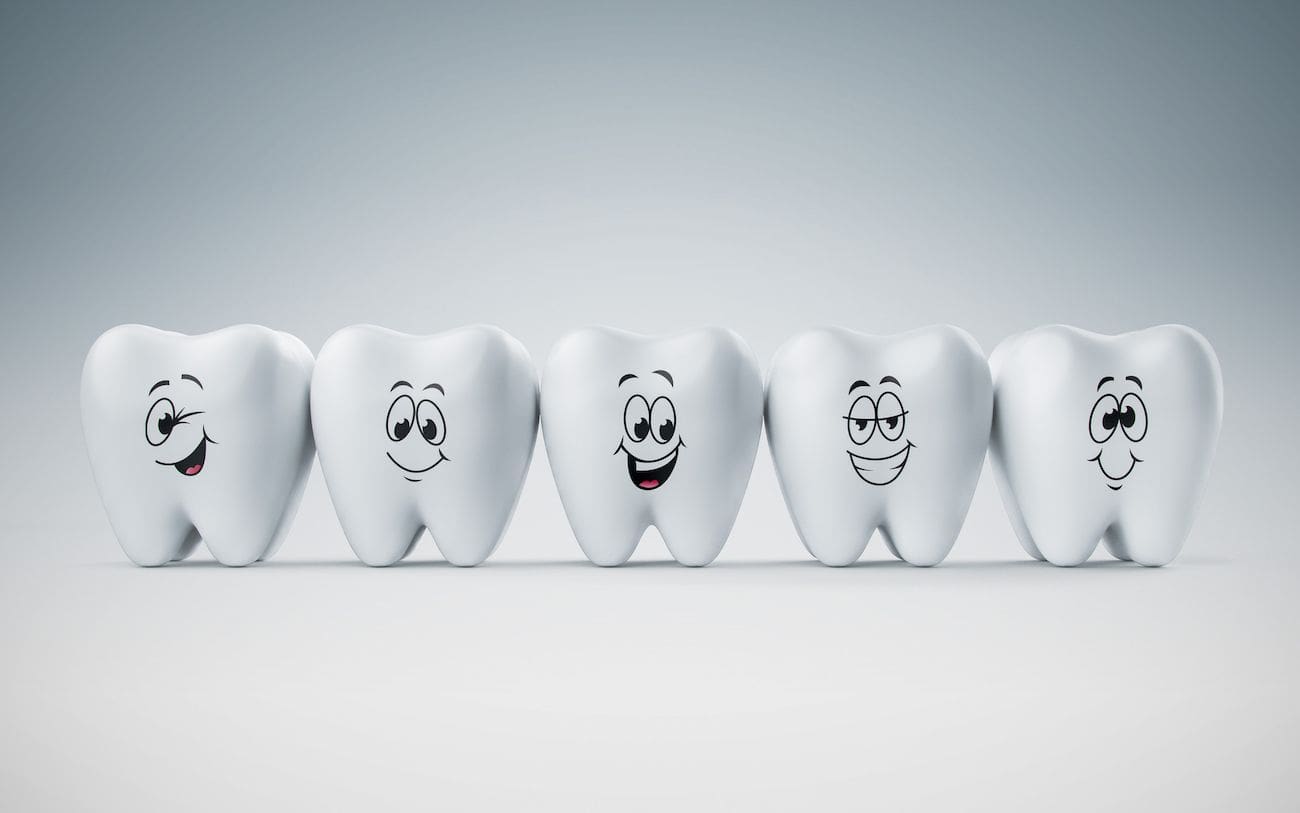Your teeth are hard workers! Every day, your teeth help you perform valuable functions to keep your body healthy and moving. Without your teeth (or teeth replacements), it would be difficult for you to eat and get nutrients. Additionally, your teeth help keep the bones in your mouth and face strong. When your teeth touch and hold pressure (like eating or speaking), it stimulates the bones in your jaw—a vital process. Without this, your bones could begin to deteriorate.
There are so many impacts that your teeth have on your body. With all that they do, how much do you know about your teeth?

The Layers of Your Teeth
Your teeth are not just a simple structure of bone; they have several layers.
Enamel
On the outer part of your teeth, you have a layer of enamel. You see this part of your teeth every time you smile. The enamel is one of the strongest tissues in your entire body. With that strength, it helps protect the delicate parts inside your teeth. As a result, when you have issues with your enamel, you can develop sensitivity or cavities.
Dentin
Just inside the enamel, there is a layer of dentin. Dentin is a layer that has small tubes (tubules) that connect the pulp to the enamel. So, this allows for the sensation of temperatures and pressure to travel from the enamel to the pulp.
Pulp
The pulp is the portion that contains the “live” part of your tooth. Blood vessels and nerves reside in the pulp, keeping your teeth alive and healthy. Also, if you receive damage to the pulp, it is possible for the tooth to die.
Cementum
Cementum is a calcified layer of tissue that helps keep your teeth connected to the bone. Additionally, it covers the root of your tooth, allowing it to stay firmly in place.
The Types of Teeth
Much like the various layers of your teeth, you have different types of teeth in your mouth.
Incisors
At the very front of your mouth, you have eight incisors—four on the top and four on the bottom. Typically, you use these teeth to bite into food. So, these teeth have a sharp edge to allow your teeth to sink into food and tear it apart.
Canines
Then, next to your incisors, you have four canines. These teeth are sharp and pointed like fangs. Canines rip and tear into food.
Premolars
Next, adults have two premolars on each side of their mouth for a total of eight. Another name for these teeth is bicuspid. These teeth have sharp points and ridges that help chew and grind food.
Molars
Finally, most adults have 12 molars in the back of their mouths. However, many people have a dentist remove their third set of molars because their mouth isn’t big enough. Molars are large and flat, which helps grind food into smaller particles for swallowing.
